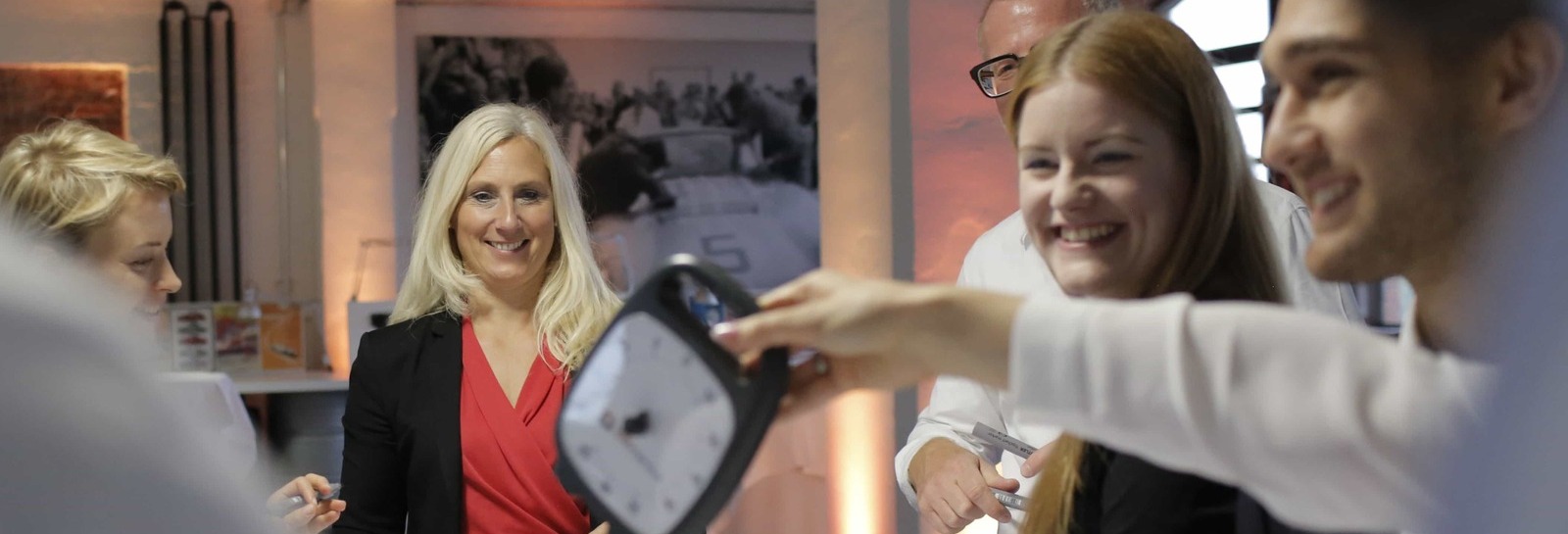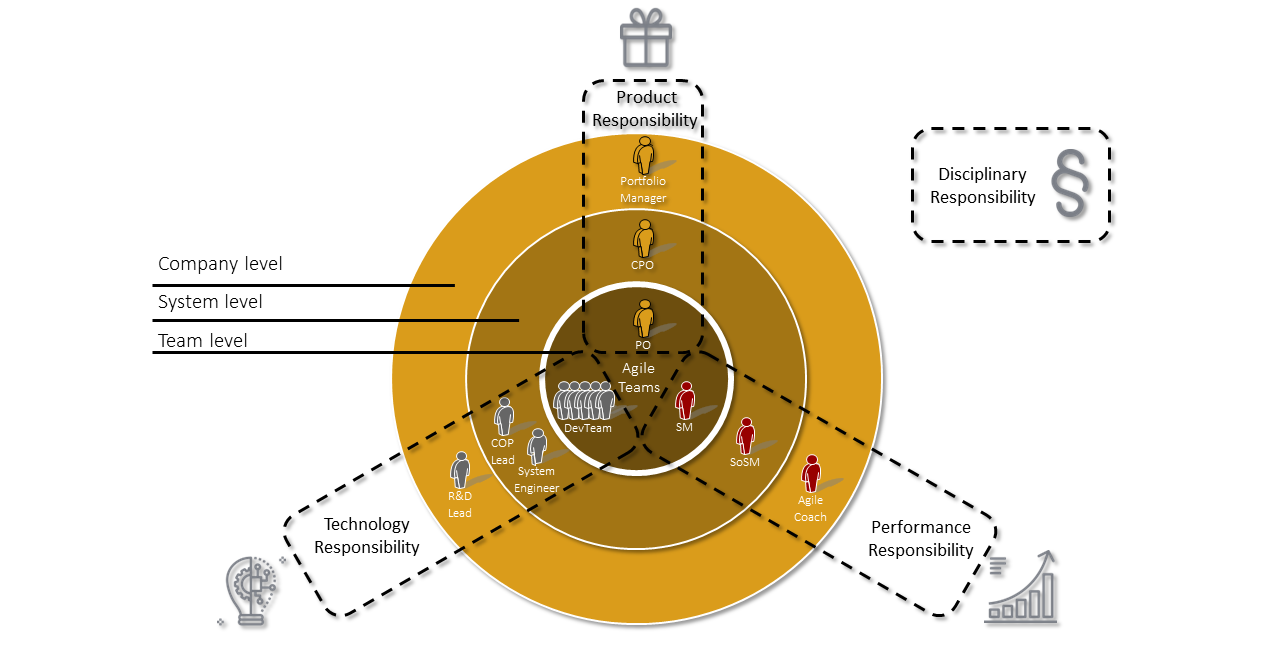Anchoring agility within your organisation
In your company, numerous teams are now working agilely. You have also managed to bring these teams under an agile coordination and leadership structure, so you have gained initial experience with scaling. Nevertheless, you recognise that agility is still patchy and that there are big differences in the agile teams. That is why you now need to strengthen the agile leadership style – the catalyst leader – in particular. You also realise that the previous organisational structure is inhibiting the growth of agility and should be adapted to the new work structure.

Strengthen the agile leadership style
Agile teams should apply an entrepreneurial mindset, be customer-oriented and show initiative. You should be allowed to make mistakes and learn, but on the other hand, you should achieve the project goals as reliably as possible. And at the same time, managers should always have a high degree of trust in these teams.
This sounds quite simple in theory, but in practice, it is very difficult for managers to implement. The system in which they “grew up” measured what mattered by other values. Up to now, the technical solution and the organisation of work in their own team or department have been in the foreground for them. These leadership styles are known as Expert or Achiever Leadership.
However, the behaviours that characterise these leadership styles often inhibit agile working immensely because they not only work very much on content but also have the goal of implementing their own solution. This is why managers from these areas usually focus on exactly what the agile team is supposed to do: Finding an efficient work organisation and implementing a good technical solution. An agile team needs a different leader. A leader who conveys much more meaning and purpose of action, who shapes and can communicate visions and who can shape the environment of the agile teams in such a way that the results are getting always better – an Environment Manager. This style of leadership is called a Catalyst Leader.
In addition to the personalities of the leaders concerned, the existing organisational structure is often an obstacle to the growth of Catalyst Leadership. In the existing organisation, the four dimensions of leadership often lack clear regulation and, therefore, influence is exerted in places where it does not make sense. For this reason, it can make sense to adapt the organisational structure to the agile process organisation.
Adaptation of the organisational structure
The aim of adaptation is to clearly separate the four different dimensions of leadership. Each dimension then has a responsible leader who performs it according to the rules of agile working. In addition to product responsibility, which is represented by the Product Owner, there is also performance responsibility, which is represented by the Scrum Master.
In addition, there is technology responsibility, which is taken on by appropriate Specialists where needed. However, this is realised as coaching in the pull principle. This means that the respective member of an agile team decides at which point the specialist is called in. The team remains fully responsible for the technical solution at all times.
Given that, in this type of organisation of the specialist disciplines, each team focuses exclusively on its own product project, there is a danger that islands will develop and synergetic knowledge and experience will remain unused. For this reason, it has proven successful in practice to carry out a cross-team, technological synchronisation for specialist disciplines in so-called Communities of Practice (COP or also called Chapters and Guilds). In such COPs, one or a few members from the agile teams concerned organise themselves to regularly exchange key experiences relating to their specialisation, and also to define rules and standards for the respective specialist area. For example, this could be the standards for design or the tools used for design. The Technology Owner is responsible for technical management.
In addition, each employee has a disciplinary supervisor who performs his role according to German (labour) law. However, since he has no (or only little) professional reference to the task of his employees, this role changes quite considerably compared to the previous direct supervisor. For an appraisal interview, which will of course still be useful in the future, this manager must, for example, call in colleagues or managers from the other dimensions of leadership. In this way, the employee always receives balanced and professionally sound feedback on his performance and results, as well as on his potential.
The often-cited “chemistry factor” – how well the superior can work with the employee – does not come into play. This greater objectivity increases the acceptance of feedback and the employee’s willingness to develop further in the interest of the company. It is obvious that, in this structure, the role of HR management also changes considerably. In particular, it is necessary that career paths are redefined and remuneration systems are adapted.
In this agile transformation, most companies are entering uncharted territory. There is no blue-print solution for what the organisation will look like after the transformation. A transformation team that moderates and supports the transformation step by step is just as essential as the support of an experienced consultant. More important than the shortest possible transformation time is the goal of bringing as many motivated employees as possible along on the journey. The consultants at CO Improve have a broad repertoire of experience with this phase of a company’s transition to an agile organisation and can thus accompany you in strengthening Catalyst Leadership and organisational change. The majority of companies that have started or carried out such an agile transformation consider the support of competent agile coaches to be a key success factor.
The benefit to you
- You create the framework conditions within which real agility can grow in your company.
- Leaders take on a new role and support agility in the best possible way.
- Obstacles that the previous organisational structure put in the way of agility are removed.
- A transformation team strengthens the acceptance of the change process and brings everyone involved with it on board.


